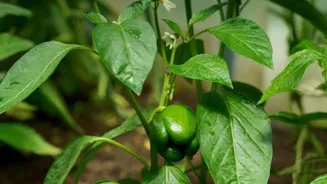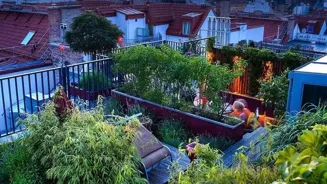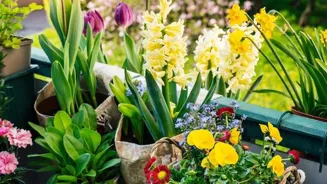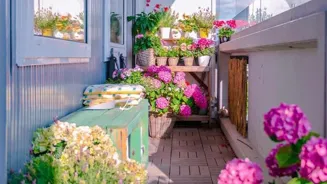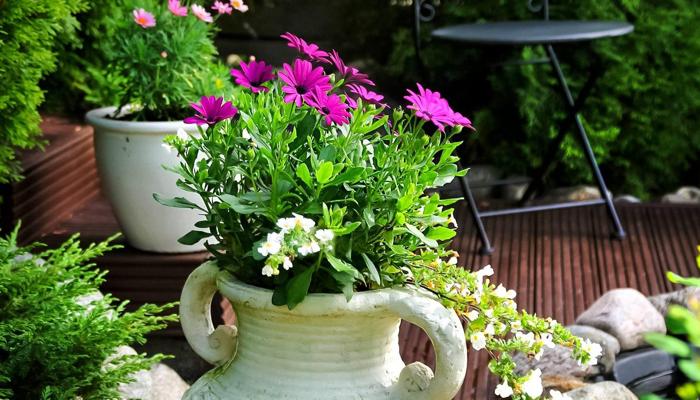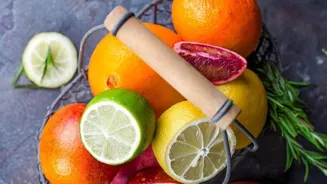Discover the joy of gardening with our 7 essential tips for beginners! Start your own thriving vegetable garden today!
Namaste, fellow garden enthusiasts! Are you dreaming of fresh tomatoes bursting with
flavor, crisp cucumbers right off the vine, or spicy chilies adding zing to your meals? Well, put aside your shopping bags from the sabzi mandi, because you can cultivate your own little paradise right at home!
Gardening, especially vegetable gardening, is becoming increasingly popular in India, and for good reason. It's a rewarding hobby that connects you with nature, provides healthy produce, and is excellent for your well-being. Don't worry if you've never held a trowel before.
With a few simple tips and a dash of enthusiasm, you can transform even a small space into a thriving garden that will fill your plate with delicious, homegrown goodness. So, let us get our hands dirty and embark on this green journey together!
Choose sunny spot with water access for successful vegetable garden
First and foremost, let's talk about location, location, location! Just like buying a house, the success of your vegetable garden hinges on choosing the right spot. Most vegetables require at least 6-8 hours of sunlight per day to flourish.
Observe your garden space or balcony throughout the day to identify the sunniest area. If you're limited to a balcony or terrace, south-facing spaces are generally ideal. Furthermore, consider the availability of water. You'll need easy access to a water source for irrigation.
Think about the drainage too. Vegetables don't like sitting in soggy soil, so ensure your chosen spot has good drainage. If you're planting in containers, make sure they have proper drainage holes. Remember, happy plants need sunshine and a well hydrated foot!
A successful garden starts with sunlight and water.
Selecting right plants crucial for region, start with easy-to-grow veggies suited to climate
Next, let’s discuss the matter of selecting the right plants, choosing the right vegetables for your region is crucial. India has diverse climates, so what grows well in the north might not thrive in the south. Research which vegetables are best suited to your local climate and growing season.
For beginners, it’s best to start with easy-to-grow vegetables like tomatoes, chilies, spinach, okra (bhindi), and beans. These are relatively low-maintenance and produce a good yield. Also, consider the space you have available.
If you have a small garden or balcony, opt for compact varieties of vegetables or those that can be grown vertically, like tomatoes or beans on a trellis. Don't be afraid to ask your local nursery for advice.
They will be able to provide you with information on the best varieties for your area and offer guidance on planting and care. Start with easier ones to ensure success.
Prepare healthy soil or potting mix for thriving vegetable garden
Now that you have a nice sunny space and selected your vegetables, the next important step is preparing your soil or potting mix. Healthy soil is the foundation of a thriving garden. If you are planting directly in the ground, test your soil to determine its pH level and nutrient content.
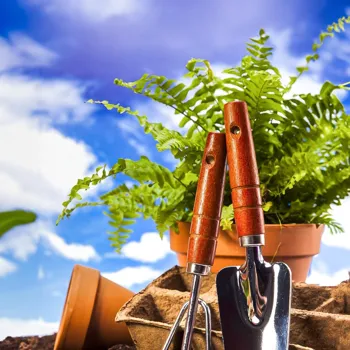
You can buy a soil testing kit at your local garden center or send a sample to a soil testing lab. Amend the soil with compost or other organic matter to improve its fertility, drainage, and aeration.
If you're growing in containers, use a good quality potting mix that is specifically designed for vegetables. Avoid using garden soil in containers because it can compact and restrict drainage.
A good potting mix will provide the necessary nutrients and drainage for your plants to thrive, and remember, earthworms are your friends. They help aerate the soil and improve its fertility naturally.
Plant seeds or seedlings properly, water deeply for healthy plants
Let’s move on to planting and watering. Once you have prepared your soil or potting mix, it's time to plant your seeds or seedlings. Follow the instructions on the seed packet or seedling label for spacing and planting depth. Make sure to water your plants thoroughly after planting.
Watering is crucial for healthy vegetable garden. Water deeply and less frequently, rather than shallow sips every day. This encourages roots to grow deep into the soil which makes them stronger and healthier.
Water early in the morning or late in the evening to avoid water loss through evaporation. Use a watering can or a hose with a gentle spray nozzle to avoid damaging the plants. Keep an eye out for signs of overwatering, such as yellowing leaves, or underwatering, such as wilting leaves.
Adjust your watering schedule accordingly. Deep watering for strong plants.
Nurture garden like children with care, fertilise, mulch, watch for pests
Let’s talk about nurturing your garden and protecting it. Like children, your plants need care and attention to thrive. Fertilising is essential to provide nutrients for healthy growth and abundant yields. Use a balanced organic fertiliser according to the package instructions.
You can also add compost tea or liquid seaweed extract to your plants for an extra boost of nutrients. Consider mulching around your plants with organic material like straw, shredded leaves, or wood chips. Mulch helps to retain moisture in the soil, suppress weeds, and regulate soil temperature.
Keep an eye out for pests and diseases. Inspect your plants regularly for signs of infestation or disease, such as aphids, whiteflies, or fungal infections. Take action immediately to control these problems using organic pest control methods or natural remedies like neem oil.
Watch them carefully and protect your plants.
Harvest ripe produce for a rewarding gardening experience
Finally, let’s talk about harvesting and enjoying the fruits (and vegetables) of your labour. The most rewarding part of gardening is harvesting your own produce! Harvest your vegetables when they are ripe and at their peak flavour. Regular harvesting encourages plants to produce more.
Tomatoes should be fully colored and slightly soft to the touch. Cucumbers should be firm and green. Okra pods should be tender and snap easily. Enjoy your fresh vegetables in salads, soups, curries, or as a simple side dish.
Share your harvest with friends and neighbours to spread the joy of gardening. And don't forget to save some seeds from your best plants for next year's garden!
Remember that gardening is a continuous learning experience, so enjoy the process, experiment with different techniques, and don't be afraid to make mistakes.
With a little patience and effort, you can create a thriving vegetable garden that will provide you with fresh, healthy, and delicious produce for years to come. Happy gardening! Harvest when ripe and enjoy eating!
